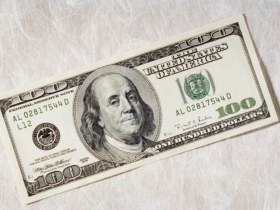A mortgage is currently almost the only way to purchase its own housing for most of our fellow citizens, but in which cash units this loan must be taken? Before the global crisis, which plunged the economies of many countries into dusk, the choice of many borrowers in Moscow fell to American dollars, which could not but attract citizens with such low interest rates, but January 2009 quickly dispelled all the illusions about the “cheap” dollar mortgage loan.
Market experts answered public questions about whether it is necessary to contact loans in foreign currency at present or is it better to take a mortgage in understandable and native rubles.
In 2009, the ruble was rapidly depreciating and doing it fundamentally quite fundamentally, but the wages remained unchanged at best. So, at the official rate of the Central Bank, on the first of August 2008, one US dollar was estimated at 23.4 Russian rubles, after six months after one dollar 35.4 rubles were given. That is, in Russian rubles, actual payments for dollar loans have risen in price by almost a half times. As a result, for several years, foreign exchange mortgage loans left the horizon of borrowers.
Currently, the situation in the world is also not stable, so the United States recently raised the bar of their public debt, avoiding the technical default, the EU countries, as earlier, is in a fever, which is why the future of the Eurozone and the European currency itself looks very vague. Indeed, before the crisis in Moscow, most of the mortgage loans were issued in dollars, in other regions, the share of currency loans was not as large as in the capital, but still felt, recalls Dmitry Ishchenko, director of banking products and marketing of Rosbank.
The specialist associates this with the fact that most of the companies that work in Moscow were calculated with their employees either in dollars or reference to this monetary unit, and lending itself was carried out on very liberal conditions, that is, the dollar rate was much lower than Rublevoy.
“Getting a loan in foreign currency, together with the amount of debt, the borrower also acquires certain currency risks that are somehow associated with the fluctuations in the exchange rate. For example, the devaluation of the ruble was most negatively affected by those borrowers who had ruble income with dollar loans. The monthly payments of these borrowers have increased very much, ”said Anna Lyubimtseva, head of the analytical center of AIZHK.
After the crisis, when, as a result of the depreciation, the ruble exchange rate to the dollar and the euro fell strongly, monthly payments in rubles increased significantly among foreign currency borrowers, which was especially painful for mortgage clients. “At the beginning of 2009, in the midst of the crisis and the period of a sharp fall in the ruble, such an anecdote went that instead of the execution and higher punishment for the crime, they give out a dollar mortgage loan for a period of 25 years,” recalls Mikhail Delyagin, head of the Institute of Globalization Problems.
The Russians remembered this time well, and no one wants to repeat the mistakes of two or three years old.










